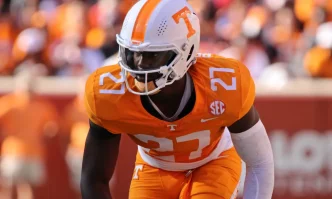A new chapter in college football is unfolding, and it appears poised to elevate Alabama football back to its rightful place at the summit of the sport.
Recently, a significant legal development has transpired: Judge Claudia Wilken approved a staggering $2.88 billion settlement between the House of Representatives and the NCAA. This pivotal decision clears the way for athletic programs to begin sharing revenue and directly compensating student-athletes, a much-anticipated shift in the landscape of collegiate sports.
Starting this July, the NCAA will distribute $2.8 billion in back payments to athletes who have participated across all sports since 2016. Athletic departments are gearing up to begin disbursing checks, with an initial revenue cap projected at $20.5 million per year. This figure is expected to grow steadily over the next decade, fundamentally reshaping how programs think about funding and compensations.
When it comes to who stands to gain the most from this new financial structure, football players will be the primary beneficiaries, as college football is the revenue-generating powerhouse of college athletics. Estimates suggest that approximately 75% of the $20.5 million allocated for each athletic department will be directed toward football. The financial pie will also include around 15% for men’s basketball, 5% for women’s basketball, and the final 5% split among other sports—though these allocations will ultimately be decided by each athletic department. Given the financial realities, it’s likely that even more will flow to football and men’s basketball, the two sports that usually operate in the black.
This shift also leads to changes in roster management. Football rosters will now be capped at 105 players, though there will be a grace period allowing existing athletes to maintain their spots, ensuring that incoming freshmen do not push out walk-ons. The scholarship limit for football has been eliminated, while basketball’s roster limit has been adjusted to 15, allowing for two additional scholarships.
For Alabama football, this transformation is promising. The dawn of regulated NIL (Name, Image, Likeness) deals signals the end of unbridled spending by wealthy boosters. Athletes will still have the opportunity to secure NIL agreements; however, any deals exceeding $600 must go through a clearinghouse run by Deloitte. This mechanism is designed to confirm that deals reflect “fair market value” based on actual endorsements, re-centering NIL’s original purpose away from a pay-for-play scenario.
While Alabama has been competitive in the NIL space, it hasn’t always matched the financial firepower of schools like Oregon, Texas A&M, and Michigan. This has not hindered the Crimson Tide’s recruiting efforts entirely, thanks largely to their prominent brand and track record of producing NFL talent. However, the fear of outlandish eight-figure NIL offers from rival programs may soon diminish.
While some under-the-table arrangements may still linger, the prospect of genuine enforcement against them suggests a stronger integrity to the system. For Alabama, the recent settlement offers clear advantages, reinforcing the idea that the so-called “Bama Discount” is real but also limiting the fierce competition that once overshadowed their recruiting efforts.
In this new era of college football, Alabama stands to not only sustain but potentially thrive, reclaiming the dominance it has enjoyed in previous years. With every change, there’s an opportunity to leverage its storied legacy and impressive pedigree—making the future look bright for the Crimson Tide family.







